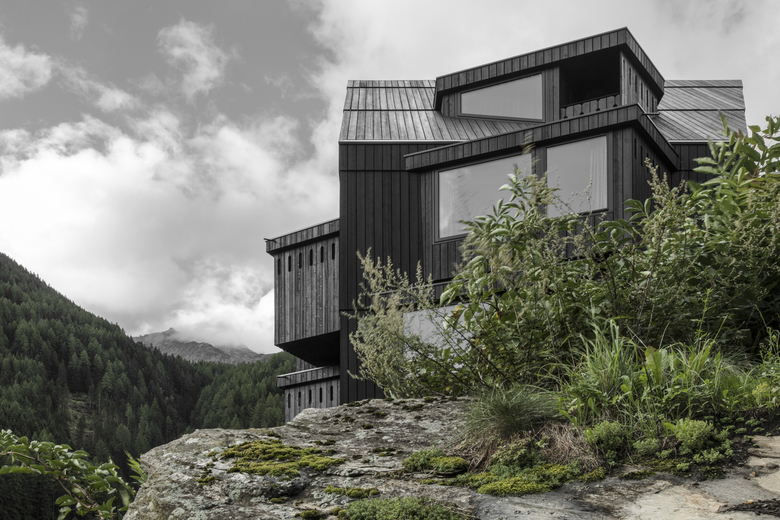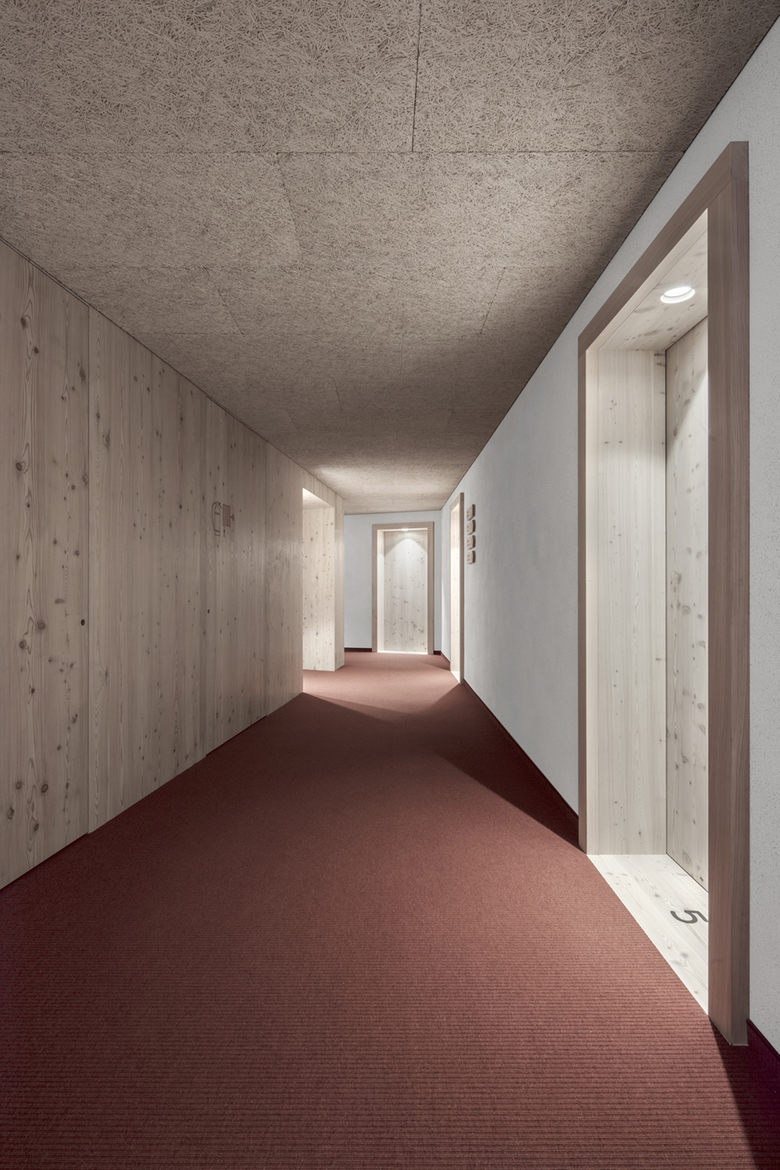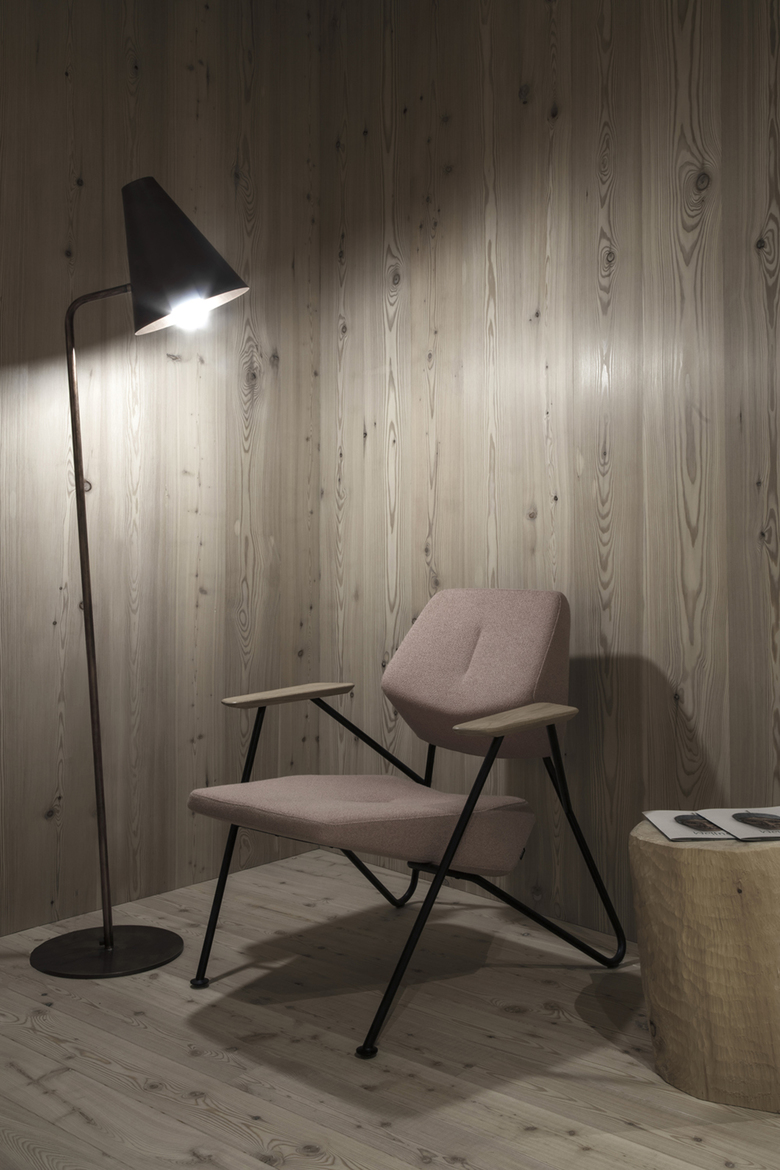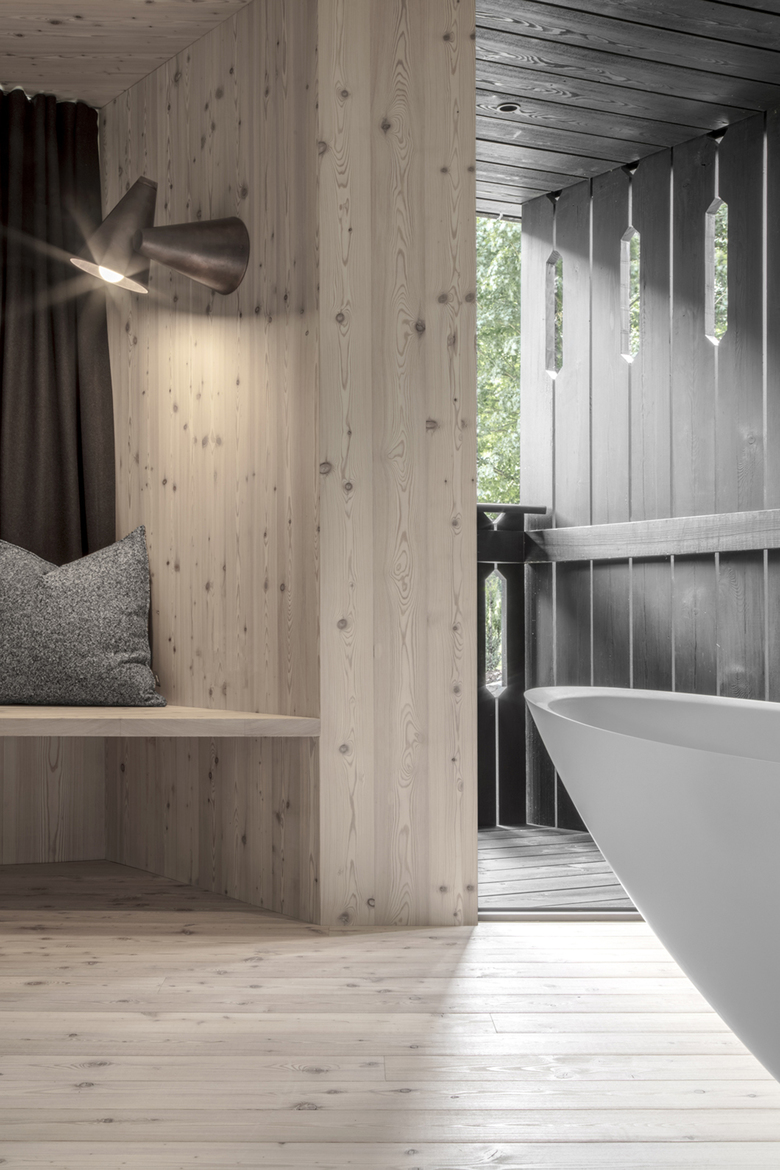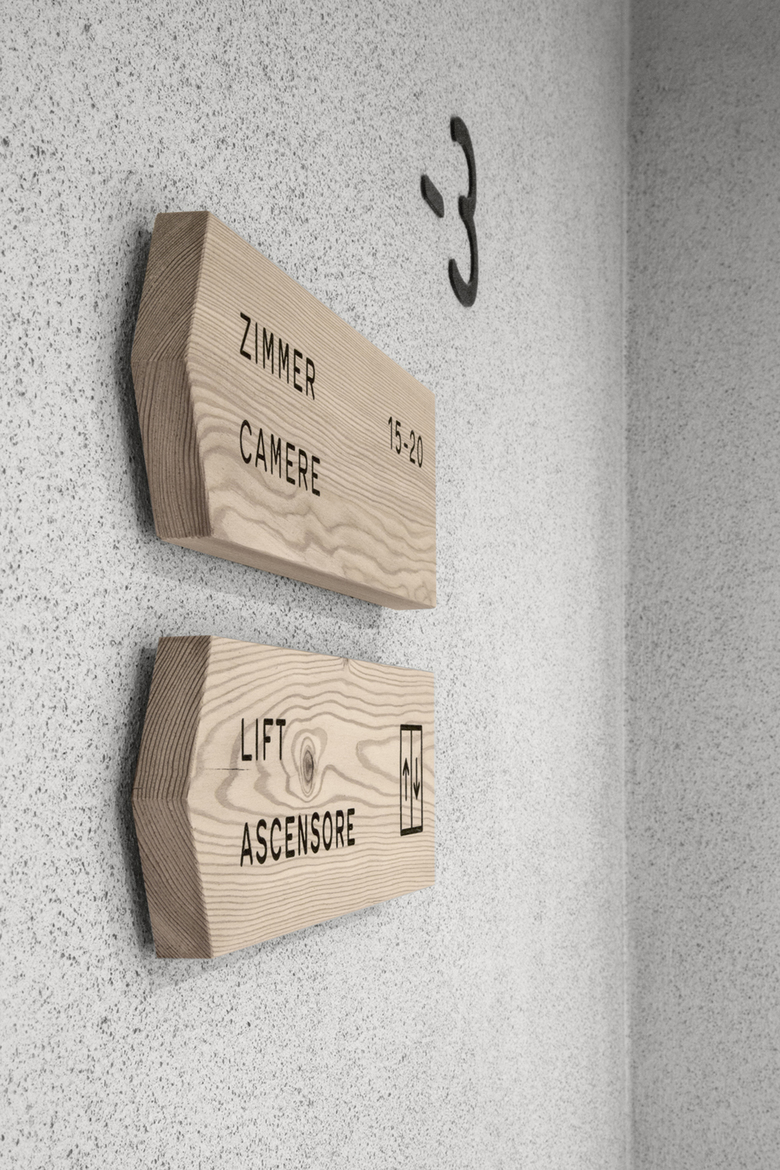Hotel Bühelwirt
St. Jakob in Ahrntal, Italy
The traditional hiking hotel is located at 1.200m above sea level, next to St. Jakob's church on a slight elevation called “Bühel”.
As the extension was positioned in the northern part of the property, the existing structure is not constrained in terms of views and solar exposure.
Like most of the surrounding traditional buildings, the new extension has a small plinth and grows in height, occupying as little land as possible and thereby minimizing its impact on the landscape. To reduce the north façade and enlarge the east and south façade, the new volume was designed with a distorted floor plan.
In order to respond to the local climatic conditions - including a very snowy winter season - the hotel culminates in a steep pitched roof.
As a striking feature, triangular bow windows were designed, turned in a way that provides the rooms with both the best orientation and view. These windows are designed as big as possible, allowing the guests to best enjoy the view, while the design even so prevents overheating during summer without the need of any sun shading system.
The outer timber shell has been kept consistently in black with a slight green undertone, which takes up the coloring of the deep green to sometimes black forests of summer. The project blends into the vivid nature and topography and still creates a high recognition value. The building stands out above a simple residential building and conveys the appearance of a "hostel". The interplay of natural materials adds warmth and natural beauty to the building.
The extension extends over 6 floors. In addition to the 20 new room units, a wellness area and a restaurant extension were designed. Understanding the extension is to "continue building" on the existing building, strengthening its qualities and creating new ones.
All rooms are reduced to the essential. Instead, their richness is given by a beautiful view and the natural materials used, such as larch wood from the surrounding forests, creating a feeling of coziness and protection. The rooms also come with a small loggia, allowing the guests to relax in a little outdoor space screened from the wind.
The plaster includes aggregates from the traditional copper mine close to the site. It enriches the atmosphere of the rooms, while hinting subtly but directly to the color and feel of the surrounding mountains, as they are the preferred destination of the hotel’s guests. The characteristic lamps from oxidized copper find their origin also in the nearby mine, being specially designed and manufactured for the project. Their uneven color refers to the long Alpine handcraft tradition, beautifully contrasted through a simple but precise geometry. Furthermore, curtains of local Loden were used to provide the rooms with additional privacy.
With the careful selection of local materials and craftsmen, the transportation distances were drastically reduced and all of the effort could be put into creating a homely atmosphere and warmth, being loved by guests from all over the world.
- Architects
- pedevilla architects
- Year
- 2017
- Client
- Hotel Bühelwirt
- Total Cubature
- 5.300 m³
- Project and Realization
- 2015-2017
Related Projects
Magazine
-
-
Building of the Week
A Loop for the Arts: The Xiao Feng Art Museum in Hangzhou
Eduard Kögel, ZAO / Zhang Ke Architecture Office | 15.12.2025 -


